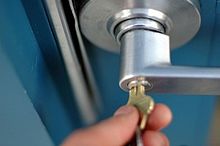Motor Learning Terms
Skill:
a learned sequence of movements that combine to produce a smooth, efficient action in order to master a particular task1
- Includes a high degree of precision and accuracy with movement.
- Performance is the execution of a motor skill at a point in time; demonstration of skill acquisition
Types of motor skills include:
- gross motor: total body and/or limb movements; typically requires a significant amount of muscular involvement
- fine motor: little body movement; primarily involving use of hands in manipulating objects
Learning:
Performance and RETENTION of the motor skill. Motor learning is the result of experience and practice.
Performance = Can your patient do the movement task? Is the movement task of high quality and precision? (This is observable)
Learning = Could your patient do the same task tomorrow? Under different conditions? With distractions? (An internal process: this can not be observed, but is inferred through observation of performance)
Motor task classifications
Discrete task: has a beginning and an end. Examples include locking wheelchair breaks, activating a push button 
 Serial task: a series of predictable steps to complete a task. Examples opening a locked door: key in lock, turn key, twist or press door handle. The series is important, because each subsequent step relies on correct completion of the preceeding step. For example a key in the lock will not open the door when the handle is pressed unless the key is turned first
Serial task: a series of predictable steps to complete a task. Examples opening a locked door: key in lock, turn key, twist or press door handle. The series is important, because each subsequent step relies on correct completion of the preceeding step. For example a key in the lock will not open the door when the handle is pressed unless the key is turned first
Continuous task: repetitive with no distinct beginning or end, requiring repetition of movement patterns. Many forms of cardiovascular exercise are considered continuous tasks
Motor Learning Taxonomy
A taxonomy is simply a classification system to describe specific things that relate to a more general idea. For example consider this taxonomy for the general idea of "office supplies"
Motor tasks can be classified from general to more specific using a taxonomy that differentiates the task using these four variable: environment, intertrial variability, and body stable/transport. Unlike the office supply example above, motor tasks are classified in a 2x2 matrix
Environment - described as open or closed
closed
- predictable
- objects do not move
open
- dynamic, unpredictable
- objects / others move
- surface and other movements within the environment are not within the control of the patient
- requires the ability to plan, anticipate, predict and respond to multiple changes while moving through space
- body stable: person is stationary
- body transport: person is moving through space or from one place to another
Intertrial variability - described as absent or present
- refers to changes in conditions of the task between attempts
- considered absent (no difference between attempts) or present (environment varies between attempts)
- higher the intertrial variability elicits adaptive responses to executing the motor skill
Body stable: person is stationary or,
Body transport: person is moving through space or from one place to another
ACTIVE LEARNING EXERCISE
Can you apply the motor learning taxonomy to a clinical situation? After watching this video example, use the CAN YOU HELP ME forum to escribe two to three functional activities that you observed in the clinic or have practiced in lab using lettering and numbering system in Gentile's Taxonomy (Table 11-4).
Support your classification with your rationale and I'll provide feedback on your effort.
1http://en.wikipedia.org/wiki/Motor_skill
toc | return to top | previous page | next page




